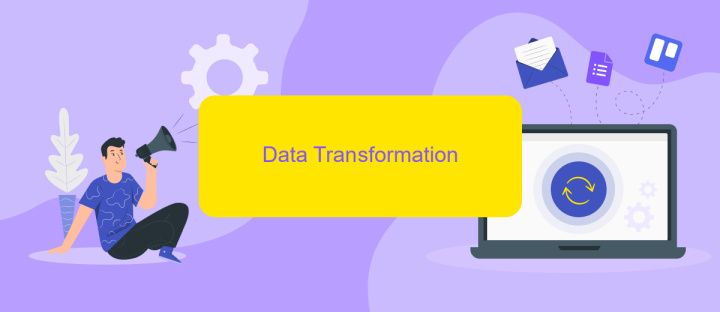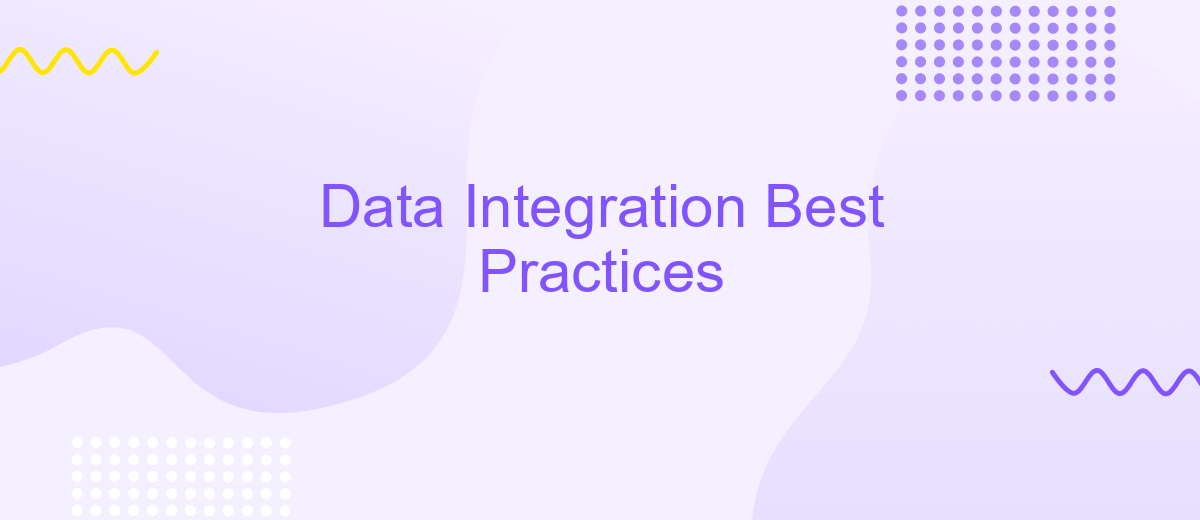Data Integration Best Practices
In today's data-driven world, effective data integration is crucial for businesses to harness the full potential of their information assets. By seamlessly combining data from various sources, organizations can achieve a holistic view, enabling better decision-making and operational efficiency. This article explores best practices in data integration to help you streamline processes, enhance data quality, and drive meaningful insights.
Data Mapping
Data mapping is a critical step in the data integration process, ensuring that data from different sources is accurately transformed and aligned. It involves defining how data fields from source systems correspond to data fields in target systems, enabling seamless data flow and consistency.
- Identify source and target data fields: Clearly outline the data fields that need to be mapped from the source to the target system.
- Establish data transformation rules: Define how data should be transformed during the mapping process to meet the target system's requirements.
- Utilize data mapping tools: Leverage tools like ApiX-Drive to automate and simplify the data mapping process, reducing manual effort and potential errors.
- Validate and test mappings: Ensure that the data mappings are accurate by conducting thorough validation and testing before full-scale implementation.
Effective data mapping not only ensures data integrity but also enhances the overall efficiency of data integration projects. By using reliable tools and following best practices, organizations can streamline their data integration efforts and achieve more accurate, consistent results.
Data Quality

Ensuring high data quality is paramount in any data integration process. To achieve this, it is essential to implement robust data validation and cleansing mechanisms. These processes help in identifying and rectifying errors, inconsistencies, and redundancies in the data before it is integrated. Automated tools like ApiX-Drive can significantly streamline this process by offering pre-built connectors and real-time data validation features, ensuring that only accurate and relevant data is transferred between systems.
Another critical aspect of maintaining data quality is continuous monitoring and auditing. By regularly tracking data flows and performing audits, organizations can quickly detect and address any anomalies or issues that may arise post-integration. Utilizing services like ApiX-Drive, which provide detailed logs and monitoring capabilities, can help maintain the integrity and reliability of integrated data over time. Ultimately, prioritizing data quality not only enhances the accuracy of business insights but also improves overall operational efficiency.
Data Transformation

Data transformation is a critical step in the data integration process, ensuring that data from diverse sources is converted into a unified format suitable for analysis. This process involves cleaning, mapping, and enriching data to meet the target system's requirements. Effective data transformation enhances data quality and usability, making it easier for organizations to derive actionable insights.
- Data Cleaning: Remove inconsistencies, duplicates, and errors to ensure data accuracy.
- Data Mapping: Align data fields from different sources to a common schema.
- Data Enrichment: Enhance data by adding relevant information or context.
Utilizing tools like ApiX-Drive can streamline the data transformation process. ApiX-Drive offers automated workflows that simplify data cleaning, mapping, and enrichment. This ensures that data is consistently formatted and ready for analysis, saving time and reducing the risk of errors. By leveraging such tools, organizations can focus on deriving insights rather than getting bogged down by data preparation tasks.
Data Security

Data security is a critical aspect of data integration, ensuring that sensitive information remains protected throughout the entire process. When integrating data from multiple sources, it is essential to implement robust security measures to prevent unauthorized access and data breaches.
One of the best practices for securing data integration involves encrypting data both in transit and at rest. This means that data should be encrypted when it is being transferred between systems and also when it is stored in databases or other storage solutions. Additionally, using secure APIs, like those provided by ApiX-Drive, can help ensure that data is securely transmitted between different applications and systems.
- Implement strong encryption protocols
- Use secure APIs for data transmission
- Regularly update and patch systems
- Conduct security audits and assessments
- Employ access controls and authentication mechanisms
By following these best practices, organizations can significantly reduce the risk of data breaches and ensure that their data integration processes are secure. Leveraging tools like ApiX-Drive can streamline the integration process while maintaining high security standards.
Performance Optimization
Optimizing the performance of your data integration processes is crucial for ensuring seamless and efficient operations. One effective approach is to minimize data latency by implementing real-time data processing wherever possible. This can be achieved through the use of advanced ETL (Extract, Transform, Load) tools that support real-time data streams. Additionally, consider leveraging data partitioning and indexing techniques to enhance query performance and reduce the load on your systems. Regularly monitoring and fine-tuning these processes will help in maintaining optimal performance.
Another key practice is to utilize integration platforms like ApiX-Drive, which can automate and streamline your data workflows. ApiX-Drive offers robust features for connecting various applications and transferring data in real-time, significantly reducing manual intervention and the risk of errors. By using such platforms, you can ensure that your data is consistently up-to-date and accessible, improving overall system efficiency. Additionally, implementing caching mechanisms and load balancing can further enhance the performance of your data integration processes, ensuring they can handle high volumes of data without degradation.
FAQ
What is data integration, and why is it important?
What are the best practices for data integration?
How can I ensure data quality during integration?
What tools can help automate and manage data integration processes?
How do I handle data security and privacy during integration?
Strive to take your business to the next level, achieve your goals faster and more efficiently? Apix-Drive is your reliable assistant for these tasks. An online service and application connector will help you automate key business processes and get rid of the routine. You and your employees will free up time for important core tasks. Try Apix-Drive features for free to see the effectiveness of the online connector for yourself.

